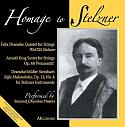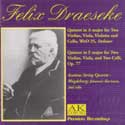Dr. Alfred Stelzner: Pioneer in Violin Acoustics
James Christensen
| "A few weeks ago in London, before a distinguished invited audience of musicians and amateurs, there was a demonstration of the bowed instruments built by Dr. Alfred Stelzner according to his scientific system. As is well known, Dr. Alfred Stelzner succeeded in solving the puzzle, previously thought insoluble, of the acoustical principles of violin making…The marvelously noble tone of the new instruments won the hearts of all lovers of music, and when, at the end of the performance, a precious old Cremonese violin was unanimously declared as no equal for the new Stelzner violin, even by its owner, it was no longer possible to deny the claim that Stelzner's instruments are the best fiddles built." Neue Zeitschrift für Musik, Leipzig (December, 1891) |
||||||||||||||||||||||||||||||||||||||||||||||||||||||||||||||||||||||||||||||
| This page updated:
|
Born on 29 November 1852, a son of Carl-Ferdinand Stelzner, the pioneer Hamburg photographer and painter of miniatures, Alfred Stelzner studied the piano and violin, as well as mathematics, from childhood. He published short fiction in his youth and served a brief apprenticeship in a precision machine tool factory.
He took up no verified professional post after his education. The available evidence indicates that he pursued many different activities. Relatives believe that he served as a redactor or subeditor at a newspaper. The existence of a violin of conventional design with his name on the label indicates that he may also have spent some time working with a violin maker. He published essays on topics unrelated to either mathematics or music, and the Swiss patent office issued patents to him in 1889 and 1890 for four simple household devices (patent numbers 1209, 1310, 1488, and 2924). Various sources indicate that he also performed acoustical studies on master violins, but he never described them in print, even in the German patent he received on 9 August 1891 (Imperial Patent Office, No. 69012) where he first presented his plan to reconfigure the sound-box of the violin. His patent, Configuration of the Resonating Bodies in Stringed Instruments, concerns the violin, the viola, the cello, the contrabass, and the violotta, an instrument he invented and named. The four-stringed violotta, tuned in fifths one octave below the violin, fills a void in the range between viola and cello. With its body length, about 40 cm, a violist can play it with ordinary technique. It ribs are much deeper than they are in a viola (45 mm at the top of the body, 60 mm at the "C" bouts and 51 mm at the button) and its string length is a little greater. It was meant to be played like a violin, the player reading treble clef, and to sound an octave lower than its treble-clef notation. The patent makes no mention of the cellone, another instrument that Stelzner later invented and named. A large cello, its four strings are tuned to fifths one octave below the violotta (and so a fourth below the cello). Its music was notated in the bass clef. It sounds without transposition. Its body length (77 cm) and its breadth slightly exceed those of a normal cello, but it is much deeper than a normal cello. The patent introduces four changes in the sound box: (1) in the outline of the body, (2) in the shape of the two main blocks connecting the belly and the back, (3) in the shape of the ribs, and (4) in the shape of the f-holes. The outline of the body, the patent states, should consist as much as possible, of connected ellipses rather than connected circles and free-form curves. Ellipses, it says, provide better resonance conditions because the sound waves produced in the interior air mass "reinforce each other reciprocally rather that creating interference, thus allowing the vibrating air molecules to develop the maximal energy." The two end-blocks should be carved so that their surfaces curve as parabolas "…whose foci, axes and diameters are so related to the ellipses…that at every point there is an amplification of the sound waves." The ribs, it states, should taper in height, being formed "so that their upper edges form parabolas, which may be simple or compound." That is, the ribs are to be deepest at the middle of the body and taper to both ends in some instruments, while in others they are deepest at the bottom of the body, tapering parabolically to the top. "The belly of the instrument is carved, in the usual fashion, out of a plate of wood lying in one plane. When it is glued to the parabolically curved ribs, it must be forced into place on them by means of screw clamps." The lower edge of the ribs may also follow a slight parabolic curve. The conventional f-hole forms two tongues of wood, a smaller one at the top and a larger one at the bottom. Because Stelzner believed the mass of these two tongues to be critical, he changed the f-hole shape to make them bigger, saying "The purpose of this modification is to produce increased vibration of the tongues and thus amplification of the sound." He gave foliar shapes to the ends of the extended f-holes. The patent provides no mathematical definitions of the ellipses and parabolas, no numerical values, no precise geometrical relationships " …because the acceptable limits within which these relations lie are fairly broad." It gives no specific dimensions for the different instruments. It concludes: "…the new instruments use elliptical and parabolic lines whose curvatures relate to one another in such a way as to provide optimal resonance conditions for the sound waves generated as the instrument is played." According to newspaper accounts, he believed that his scheme of carefully calculated surfaces actually underlies the design of instruments constructed according to traditional patterns. He thought that empiricism had led makers of prior centuries to approximate the plan he had discovered. The best instruments, he believed, approach his defined system of surfaces, their tone varying in beauty, strength, and carrying power to the extent that they approach it. Stelzner seemed to see his innovations as having an international scope, for patents that were essentially the same as the German patent were issued in Great Britain (No.14,037) on 18 September 1891, in Switzerland (No. 6155) on 23 November 1892, and in the United States (No. 492,948) on 7 March 1893. Instruments made for the Swiss market exhibit a brand with a Swiss cross and the number 6155. He established production at Wiesbaden even before the 1891 German patent was issued, employing the geigenbaumeister, Richard Wiedemann. In 1893, Stelzner moved his operation to Dresden where Augustus Paulus produced the instruments. Paulus, who had just come to Dresden from Markneukirchen to take over the workshop of Richard Weichold, employed several workers and produced Stelzner's instruments rapidly. Stelzner and Paulus had several assistants or apprentices during the period that their shop in Dresden was in operation. They included Otto Windisch, Wilhelm Brückner (in 1895-1897) and Arnold Bernhardt (before 1905). The last known instrument from their shop, a violotta, was produced in 1899. [Note: the Brückner referred to here left a pedigree of violinmakers, and there is still a Brückner shop in Germany. The elder Brückner, who worked with Stelzner, was famous for his violas, and the author has been told that, in Germany, violists cherish their Brückner violas!] I have now seen most of the Stelzner instruments I could discover in over six years of searching. In cases where I have seen multiple examples of one kind (the violins and violottas), the individual instruments are essentially identical. The unique outlines of the body and the shapes of the f-holes are conspicuous. The unprinted label contains only Stelzner's signature, the date of completion, and the serial number.
Fittings of identical design characterize all the different kinds of instruments, a ribbed ebony tailpiece and ebony pegs with bulbous outer margins. He always used high-quality maple and spruce. The finish of those instruments made in Dresden after January 1893 is a shiny spirit-varnish without vivid staining or decoration. Those made before then, in Wiesbaden, have a darker oilier varnish. Stelzner's firm produced all kinds of instruments simultaneously and rapidly. Number 7, a violin, is dated 1891 while number 100, a viola, is dated April 1893. Thus, his enterprise produced 93 instruments in 28 months, and he made at least 330 instruments in all. A comparison of higher serial numbers and dates indicates a much slower rate of production in later years. Stelzner promoted and sold his instruments aggressively, writing "At the risk of offending some readers, I believe that in the future I will be recognized as the foremost authority on the manufacture of bowed stringed instruments, as well as the creator of the definitive form of the violin's resonating body." He also sold them widely, sending instruments, at least in 1893, the only year where I found records, to agents in Hamburg, Brussels, London and New York. In Germany, he priced his violins, violas and violottas at 400 marks, and his cellos and string basses at 650 marks. A sales manual published by Stelzner’s London agents, Haynes & Co., lists the the violin, viola, and violotta at 30 pounds and the cello, cellone, and bass at 50 pounds. Testimonials by experts appear in a booklet apparently produced by Stelzner as a marketing tool. Eugene Ysaÿe wrote: "Your instruments are desirable for the power and beauty of their tone, and there is no doubt of the advance you have achieved through the originality of your construction methods." Emile Sauret said: "I write…in order to tell you once more that the splendid violin of your system, on which I played the concerto of my beloved teacher Vieuxtemps, is a superb instrument whose tone is large yet agreeable, and that the three upper strings are of truly magical charm for a violinist who loves a powerful tone but also a noble one. The G-string, the violinist's favorite, has a perfect beauty of tone." The cellist and composer, David Popper wrote: "To my delight, I found that the tone of this instrument did not have the unfinished quality one usually finds in new instruments. On the contrary, especially on the bass strings, the tone is more like the noble sound of the old Italian master instruments." Another cellist, Hollmann, found the cello he played to have "…the velvety softness of the Italian master instruments…." August Wilhelmj said: "Your new violin won a signal victory when compared with the splendid Guarneri you own, and the strength and incomparable timbre of your bass instruments were unparalleled by anything I have ever heard." Felix Alfermann wrote "…without the slightest envy, I would be willing to give a higher evaluation to the violin built according to your system, which I have had in my hands, than to my Stradivarius violin…with respect to fullness and beauty of tone." Similar testimonials came from Jules Massenet, Hans Richter, and Hugo Heermann. Other newspaper articles of the period allude to commendations from the cellist, Gruetzmacher, from Hans Richter, from Joseph Joachim (who apparently purchased some of the instruments), and even from Helmholtz himself! Praise also came from the Landgrave of Hessen and the King of Bavaria. Newspaper articles enthusiastically described concerts performed on Stelzner instruments by the Halir, Rappoldi, and Rosé String Quartets. Other concerts incorporated the violotta and cellone, the instruments that Stelzner had invented. The special music needed for these combinations was composed by Stelzner himself and by Arnold Krug, Ferdinand Behm, Otto Kaletzsch, A. E. Gerspacher, and Felix Draeseke. The Draeseke work, a quintet for 2 violins, viola, violotta and cello, and the Krug work - a sextet for 2 violins, viola violotta, cello, and cellone - were published and have been recently revived and recorded by the Draeseke Society. A sextet by Theodor Streicher was also published. These works came about as part of a competition sponsored by the Dresden Conservatory in May 1896 for the composition of chamber music specifically for Stelzner instruments. To demonstrate their timbre in orchestral string sounds, Stelzner composed operas (apparently both librettos and music) incorporating his instruments: Rübezahl, an opera in seven acts performed in the Dresden Court Theater in 1902 and Swatowit's Ende, in one act, performed at the Court Theater in Kassel in 1903. He wrote two other operas, Cecilia (Five acts), and Kinder des Todes (Two acts), probably using his instruments as well. Max Schillings wrote music for the violotta as a solo instrument in his widely performed opera, Der Pfeifertag. However others disparaged Stelzner's innovation as another in a series of such reforms, all failures. An example of the controversy appears in the response to an article written by Arnold Dolmetsch, the French-born musician and scion of a family of instrument makers, then just rising into prominence in the English musical world. He was later to become famous for his revival of interest in ancient instruments. Arnold Dolmetsch’s article, "The New Era in Violin Making", published in Musical News on 13 November 1891, described a recent event held on the premises of Bechstein (a distinguished piano company) in Wigmore Street in London. The celebrated London impresario, Alfred Schulz Curtius, had invited many eminent musicians to meet Dr. Stelzner and to hear his theories about the construction of bowed instruments. Emil Kreuz, a close friend of Mr. Dolmetsch, was to provide musical illustrations to the lecture, and a quartet of the new instruments also played. Dolmetsch opined that few in the audience had any serious hope that that any new instrument of distinct value would be forthcoming, and that every few years a new inventor claims to have found the secret of the inimitable old masters. He further asserted that the acoustical theories advanced by Stelzner, " …with plenty of scientific terms, and a large amount of confidence…" are deduced from a totally wrong principle, that other of the scientific principles he accepted remain controversial, and that several of Stelzner’s statements were incorrect. He condemned the sound of the violotta, saying that the player gave pleasure in spite of the instrument and that that the quartet of Stelzner instruments produced a rough and unsympathetic tone, despite the skill of the performers. Stelzner responded stoutly with a letter in the Musical News of 11 December saying that if Dolmetsch was unable to understand the working out of the physical laws underlying the new design of the instruments, it was hopeless to make it clear to him through correspondence, and that he would leave it to the highest scientific authorities to judge the correctness of the theories. Stelzner also pointed out that it was a viola, not the violotta, that was played by Mr. Kreuz, who was in fact playing it for the very first time that evening and naturally could not have felt at home on an instrument that was new to him. Finally, Stelzner offered a letter of strong commendation of one of his cellos from David Popper, the eminent German cellist. The 25 December issue contained a letter from a self-described "humble fiddle-scraper", a Mr. Bullock, pointing out the lack of objectivity of inventors about their claims for their inventions and saying that, until he saw the greatest players using only instruments made according to Stelzner’s plans for their solo purposes, he would not attach anything to what Stelzner had to say. Alfred Schulz-Curtius then wrote in the 29 January 1892 issue about the warm reception to a recent performance in Wiesbaden of the Vieuxtemps A minor violin concerto by Emile Sauret playing a Stelzner violin. Schulz-Curtius appended a letter from M. Sauret praising the instrument highly. He also chided Mr. Bullock, saying that his attitude was that of the philosopher who refused to go near the water until he knew how to swim. Such controversies had been anticipated. An article in Zeitschrift für Instrumentenbau said of Stelzner's newly-established firm: "The partners in this enterprise must come to terms with the fact that they will encounter great difficulties in the introduction of these instruments, for there are no more conservative circles than those of our violinists and cellists, and the advantages of the new family of instruments would have to be quite concrete in order to sway these gentlemen in any way." A warning in the Neue Zeitschrift für Musik, in December 1891 said: "The significance of Stelzner's innovation is also demonstrated by the fact that, as with every innovation, two parties arise, a party of light and a party of darkness. The former, led by the best and most famous artists, such as Professor Emile Sauret at the Royal Academy of Music and Monsieur Eugene Ysaÿe, recognize without any hesitation the beauty and fullness of tone which distinguishes the new instruments to such a high degree, and they recognize that their students and lesser musicians will now be able to obtain for a moderate price an instrument which equals all the good qualities of the old Italian master instruments. But the other party that has formed is the party of envious grumblers, the charlatans who wrap art in a mysterious darkness in order to exploit their clients, the uninformed. Who are these but the dealers who traffic in old instruments, yearly bringing in thousands upon thousands of pounds sterling? It is no wonder that these gentlemen hope to delay the day of reckoning as long as possible." In 1894, a newspaper notice announced a bankruptcy hearing concerning Stelzner's firm. Later that year, he published an appeal to "…rich, unprejudiced friends of music and capitalists…" to raise money for his company. He stated that he already had built over 300 bowed instruments, sold all over the world. At least a few financiers must have appeared, for he continued to produce instruments as late as 1899, but bankruptcy ultimately ensued. The disgrace led him to take his own life on 14 July 1906, shortly after sending the unpublished score of his opera, "Cecelia" to his brother. His childless widow, Angelika, an opera singer, disposed of the remaining instruments through the family of that brother in Lübeck.
Other factors could contribute to Stelzner's obscurity today. His secretive thinking in elaborating his scheme may have put off other violin makers. He was not a major figure in mathematics and acoustics, and he may have seemed an outsider among musicians and instrument makers. He was a German working in a sphere dominated by Italians. He worked in Saxony, whose violins were then viewed by many with some degree of condescension. Stelzner's instruments can be seen as the result of a first attempt at the modern scientific design of violins and their mass production. Thus, his story represents the impact of the new scientific and economic thinking of the late 19th century on 18th century art and craftsmanship. The failure of his enterprise, the stigma of his bankruptcy and suicide, and the catastrophic subsequent history of central Europe, all joined together to banish him and his story to obscurity. A modern study of those Stelzner instruments that survive might help to dispel some of the mysticism that still surrounds the subject of the acoustics of the violin family.
|
|||||||||||||||||||||||||||||||||||||||||||||||||||||||||||||||||||||||||||||
A Summary List of Stelzner Model Instruments
(Last updated: 19 November 2011) I. Original Stelzner Model Instruments (made by Richard Wiedemann, Wiesbaden, before January 1893 and by Augustus Paulus, Dresden, after that date); Listed in Order of Serial Numbers.
II. Original Stelzner Model Instruments without Serial Numbers and Labels
III. Stelzner Model Instruments Made by Makers Other than R. Wiedemann and A. Paulus
Representative Dimensions of Stelzner Models (cm). Dimensions among the violins, violas and violottas are consistent, but they vary more in the three cellones. I have measured only one example each of cello and bass.
|
||||||||||||||||||||||||||||||||||||||||||||||||||||||||||||||||||||||||||||||
| Music originally composed for Stelzner instruments: | ||||||||||||||||||||||||||||||||||||||||||||||||||||||||||||||||||||||||||||||
AK Coburg DR 0010 [CD]
Naomi Gjevre and Javier Pinell, violins; James Przygocki, viola; John Thomson, violotta; Barbara Thiem, cello; Richard Rognstad, cellone - The Summit Chamber Players - premiere recording of music played on original Stelzner instruments! Read more... AK Coburg DR 0004 [CD]
Acantus String Quartet - Magdeburg Draeseke had already written his three string quartets when he composed his String Quintet in A. The fifth instrument, the "violotta", was developed by the acoustician and composer Dr. Alfred Stelzner. The violotta has been described as a tenor viola; it is a rarely used instrument that attracted Draeseke's attention. The Quintet in F from 1901 is considered by some as the composer's most important chamber work. |
||||||||||||||||||||||||||||||||||||||||||||||||||||||||||||||||||||||||||||||
[Chamber Music] [Orchestral Music] [Keyboard Music] [Listen: mp3 - Real Audio] [Top]
© All contents copyright by the International Draeseke Society/NA
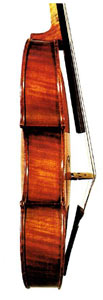
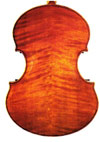



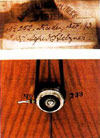
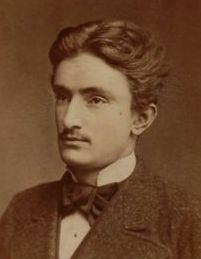 After attending the Höhere Bürgerschule in Munich, and the Polytechnische Schule in the same city (now the
After attending the Höhere Bürgerschule in Munich, and the Polytechnische Schule in the same city (now the 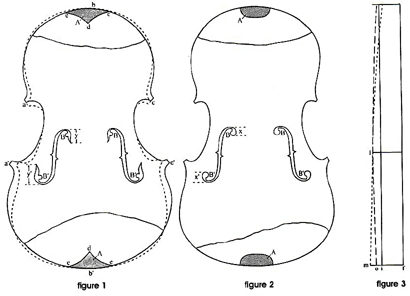
 He numbered his instruments in sequence of production, regardless of kind, the serial number appearing also as an external brand next to the end-peg. The inside of the back contains two other brands, one reading "nach Dr. Alfred Stelzner's System" and the other reading "patentirt." Some instruments also contain a brand consisting of a Swiss cross with the number 6155, beside the button or end pin. This apparently signifies instruments made for the Swiss market under the Swiss patent.
He numbered his instruments in sequence of production, regardless of kind, the serial number appearing also as an external brand next to the end-peg. The inside of the back contains two other brands, one reading "nach Dr. Alfred Stelzner's System" and the other reading "patentirt." Some instruments also contain a brand consisting of a Swiss cross with the number 6155, beside the button or end pin. This apparently signifies instruments made for the Swiss market under the Swiss patent.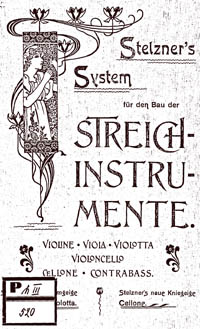
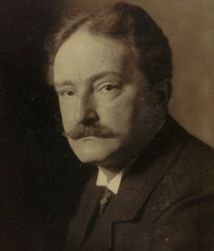 Stelzner probably imagined that the future would bring him the reputation he felt he deserved. Instead, however, he was soon forgotten. In 1920, only 14 years after his suicide, Apian Bennewitz summarized the reception of Stelzner's instruments: "Time has shown that this kind of instrument has fallen into obscurity. It has been impossible to introduce it in spite of all the good reports. The configuration of tensions between the back and the belly created by the high middle ribs created a characteristic tone that had no relation to the ideal tone we are accustomed to - free, Italian, agreeable. And so these instruments, interesting though they may be, have only a curiosity value." Though Apian Bennewitz must have correctly expressed the general opinion, Stelzner's model was not wholly forgotten, for the museum at Markneukirchen, which Apian Bennewitz headed, possesses two copies of Stelzner violins, one (a poor copy) made in 1951.
Stelzner probably imagined that the future would bring him the reputation he felt he deserved. Instead, however, he was soon forgotten. In 1920, only 14 years after his suicide, Apian Bennewitz summarized the reception of Stelzner's instruments: "Time has shown that this kind of instrument has fallen into obscurity. It has been impossible to introduce it in spite of all the good reports. The configuration of tensions between the back and the belly created by the high middle ribs created a characteristic tone that had no relation to the ideal tone we are accustomed to - free, Italian, agreeable. And so these instruments, interesting though they may be, have only a curiosity value." Though Apian Bennewitz must have correctly expressed the general opinion, Stelzner's model was not wholly forgotten, for the museum at Markneukirchen, which Apian Bennewitz headed, possesses two copies of Stelzner violins, one (a poor copy) made in 1951. This article is based on Dr. James Christensen's notes originally prepared for the
This article is based on Dr. James Christensen's notes originally prepared for the 